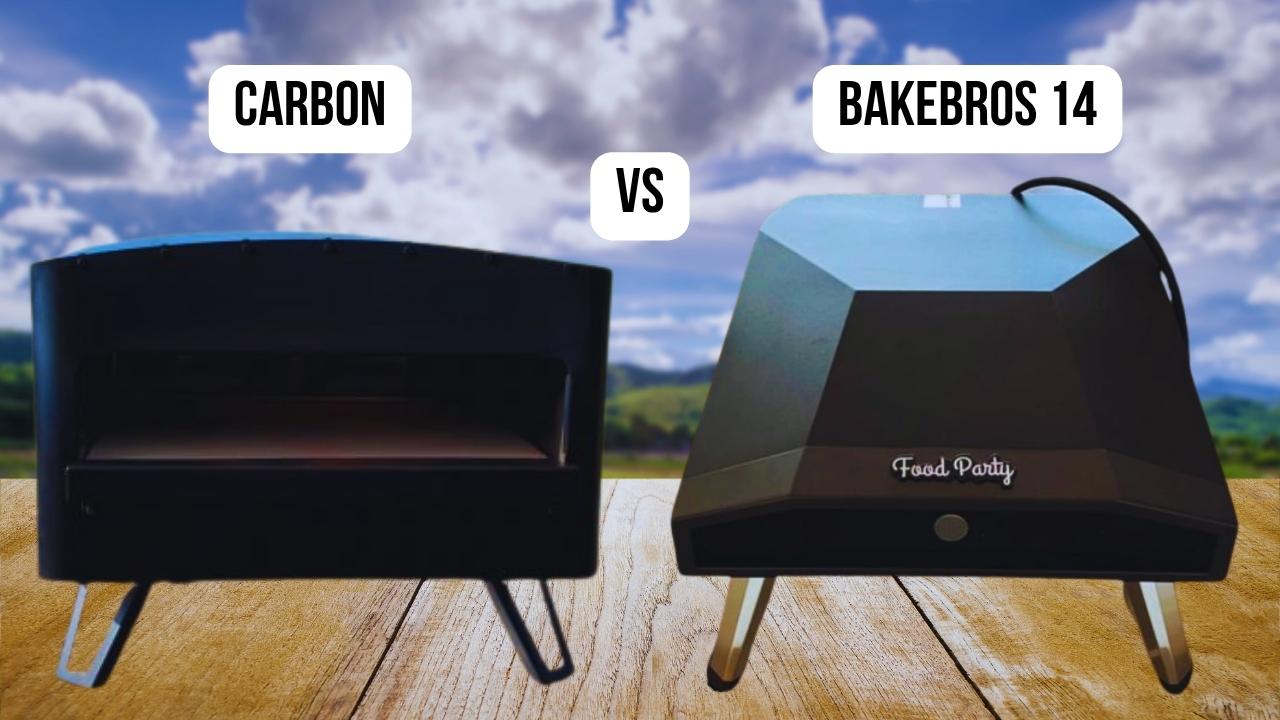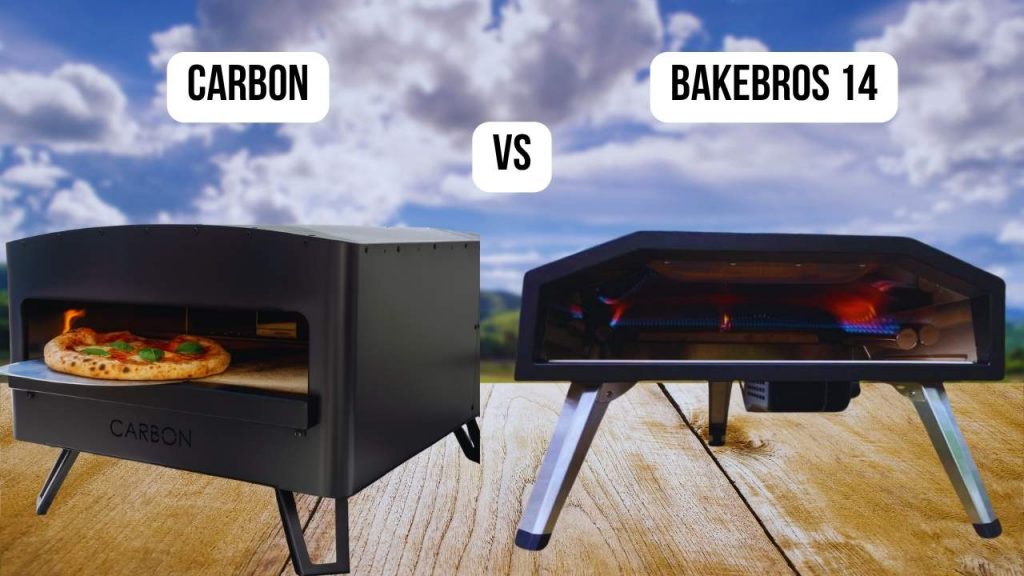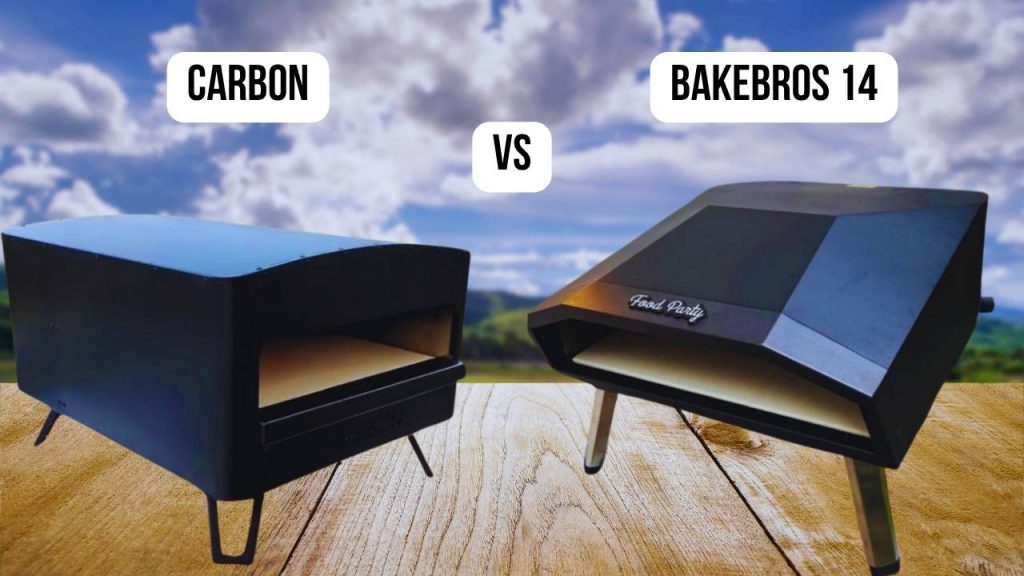As a restaurant chef with over 10 years of hands-on experience at Dequte Restaurant LironBoylston, I’ve tested many outdoor pizza ovens to see which ones truly deliver in a professional kitchen. In this article, I’ll compare the Carbon Pizza Oven and the Bakebros 14 Pizza Oven, both of which I’ve used extensively in my kitchen setup. I evaluated them based on several important factors: build quality and materials, temperature control, shape and design, first-time usage impressions, power source, size, ease of cleaning, and of course—a real Margherita pizza cooking test to see how they perform under pressure. (If you want to dive deeper into how I test pizza ovens step-by-step, I’ve detailed my full process in a separate article.)
The Carbon Pizza Oven stands out with its dual burners, premium materials, and ability to reach incredibly high temperatures quickly—ideal for consistent, professional-grade results. On the other hand, the Bakebros 14 Pizza Oven is a more budget-conscious option that still manages to offer great heat performance and a decent pizza experience in a compact form.
Here, I’ve done an in-depth comparison of Carbon and the Bakebros 14, backed by my test results.
Lastly, just a heads-up—this article includes referral links. If you find it helpful and decide to purchase one of these ovens, using my links helps support the blog at no extra cost to you. Thanks for your support!
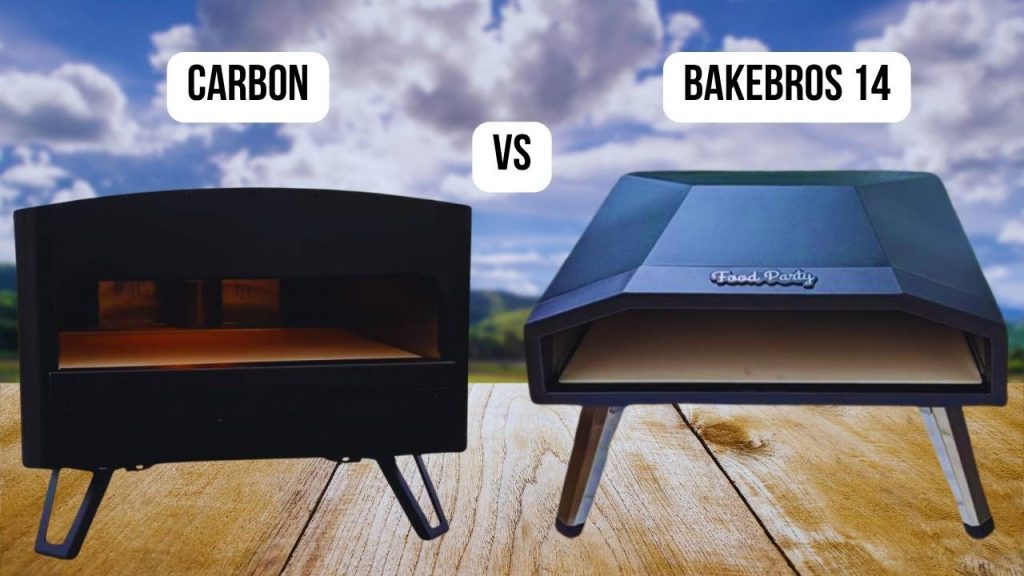
Carbon VS Bakebros 14: Quality and Materials
| The Carbon Pizza Oven uses high-quality stainless steel with rust-resistant coating and durable firebrick for superior heat retention and longevity. |
The Bakebros 14 is made from stainless steel as well, but lacks the thickness and sturdiness found in more premium ovens like the Carbon.
|
Carbon VS Bakebros 14: Temperature Control
| Carbon features dual burners—upper and lower—for precise flame control. It easily reaches temperatures over 950°F. |
Bakebros 14 reaches up to 900°F and provides good temperature control, but uses a single-burner system.
|
Carbon VS Bakebros 14: Shape
| Carbon’s square cooking stone (15″) and compact, boxy design ensure even airflow and efficient heating. |
Bakebros 14 has a compact design, but the shape slightly limits real pizza size to around 12″.
|
Carbon VS Bakebros 14: First-Time Usage Impressions
| Carbon gave a premium first impression with branded detailing, strong construction, and intuitive controls. |
Bakebros 14 was quick to assemble and simple to use, but felt lighter and less robust on first touch.
|
Carbon VS Bakebros 14: Power Source
| Carbon runs on propane or natural gas. Its dual-burner setup offers consistent heat without the hassle of refueling. |
Bakebros 14 runs on LPG gas and is easy to connect and operate, though it lacks the dual-burner flexibility of Carbon.
|
Carbon VS Bakebros 14: Size
| Carbon weighs 60 lbs and supports up to 15” pizzas. It’s more substantial, with better interior space for airflow and baking multiple items. |
Bakebros 14 weighs around 39.5 lbs, easy to move, but practical pizza size is closer to 12”.
|
Carbon VS Bakebros 14: Ease of Cleaning
| Carbon includes a cleaning brush and features a well-designed interior that’s easy to wipe down and maintain. |
Bakebros 14 is simple to clean, though removing the stone and mesh disc is more manual and no brush is included.
|
Pizza Cooking Test: Carbon vs Bakebros 14
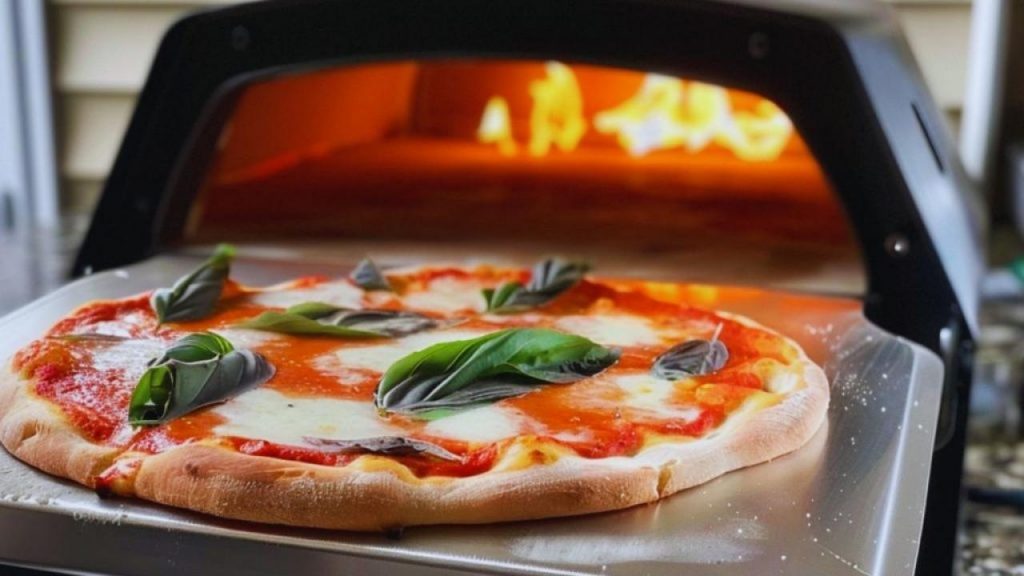
To fairly evaluate both ovens, I used the same dough, ingredients, and weather conditions. The goal was to test how quickly each oven heats up, how long it takes to cook a classic Margherita pizza, and most importantly—what the final result tastes like.
Carbon Pizza Oven heated up impressively fast. The stone reached about 740°F in just under 15 minutes. I launched my Margherita pizza onto the stone, and it cooked in roughly 80–90 seconds. The crust came out beautifully browned with a nice leopard spotting on the bottom, while the cheese melted evenly and developed just the right amount of blister. The bite had a great balance of crisp and chew, and the sauce tasted slightly sweeter due to the high heat caramelizing the sugars in the tomatoes. The flavor was deep and well-rounded.
Bakebros 14 took a little longer—about 25 minutes to reach its ideal cooking temp. I launched the same style pizza and it was ready in around 60 seconds, but it required more rotation to prevent burning. The top cooked quickly, but the bottom needed more attention. The final result was good—the cheese melted nicely, and the crust was crisp—but lacked the same depth and evenness I got from the Carbon. The taste was still solid, just not as complex or charred in a satisfying way.
Overall, both ovens produced good pizzas, but Carbon edged ahead with better heat distribution, slightly richer flavor, and more consistent results.
How We Tested
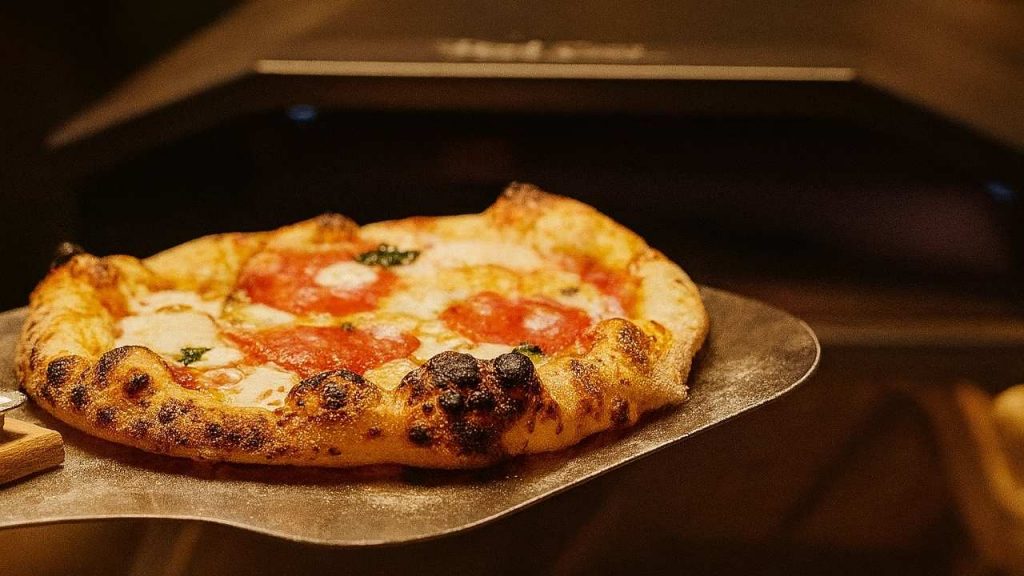
As a restaurant chef with over a decade of hands-on experience at Dequte Restaurant LironBoylston, I took both the Carbon and Bakebros 14 pizza ovens through a thorough real-world cooking test in my own kitchen. The goal was to assess how they perform under realistic conditions—not just on paper.
I used the same batch of homemade dough, identical Margherita toppings, and timed each preheat session to track how quickly the ovens reached cooking temperature. I monitored the internal stone temperature with an infrared thermometer and launched pizzas once each oven hit optimal heat. I cooked multiple pizzas back-to-back to test heat retention and consistency.
Beyond cooking performance, I paid attention to build quality, how intuitive each oven was to use out of the box, and how easy it was to clean after multiple sessions. The process mirrored how I’d test any piece of equipment for my restaurant: with precision, repetition, and a focus on the final product—flavor and texture.
For those interested in my complete testing method, including tools, setup, and control variables, I’ve published a detailed article about my pizza oven testing process separately.
Conclusion
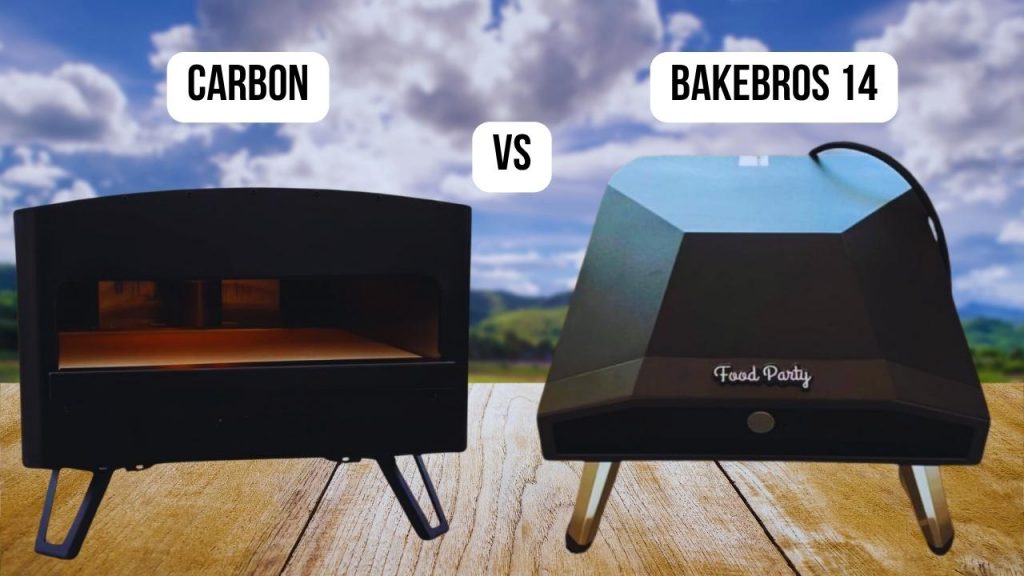
At the end of the day, it’s your choice whether the Carbon or the Bakebros 14 suits your pizza-making style best. Both ovens have their strengths, and either one can elevate your outdoor cooking game. If you found this comparison helpful and decide to purchase one, I’d highly appreciate it if you used my referral links below. I’ll earn a small commission at no extra cost to you—and it helps keep this blog alive.
Thank you for supporting my work!

